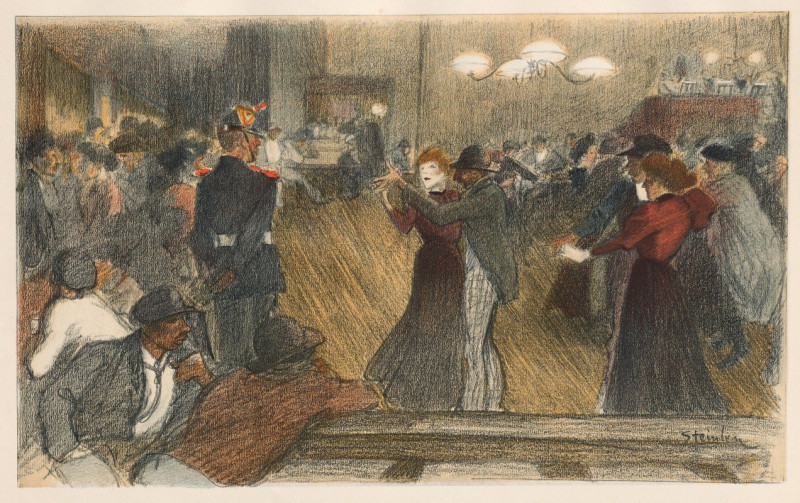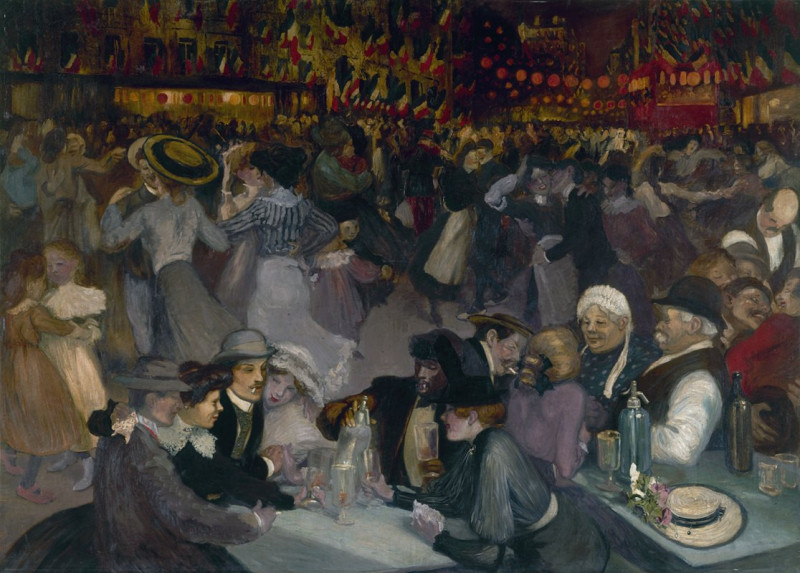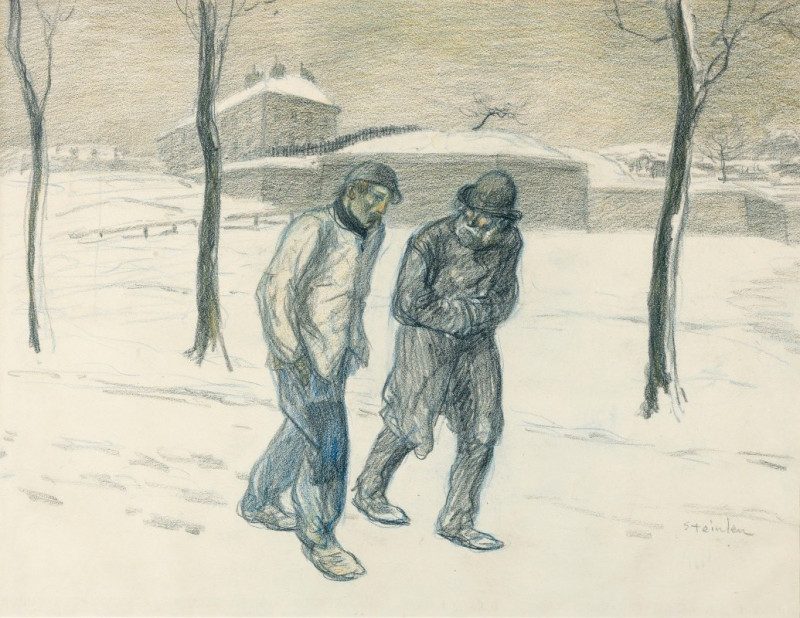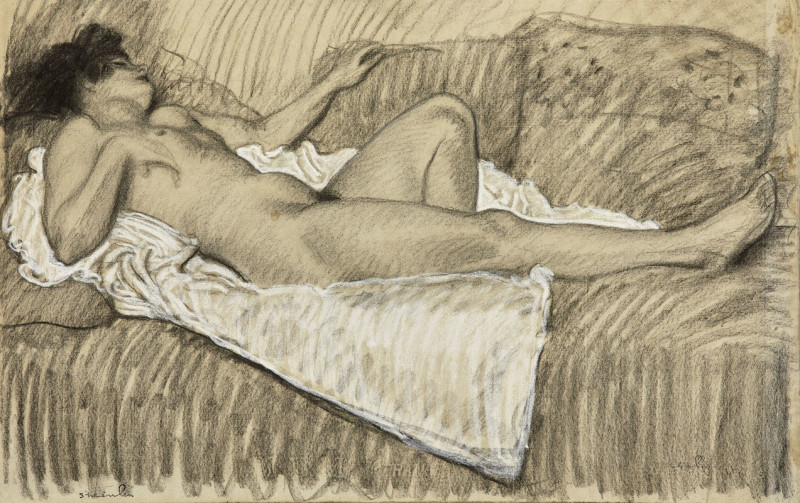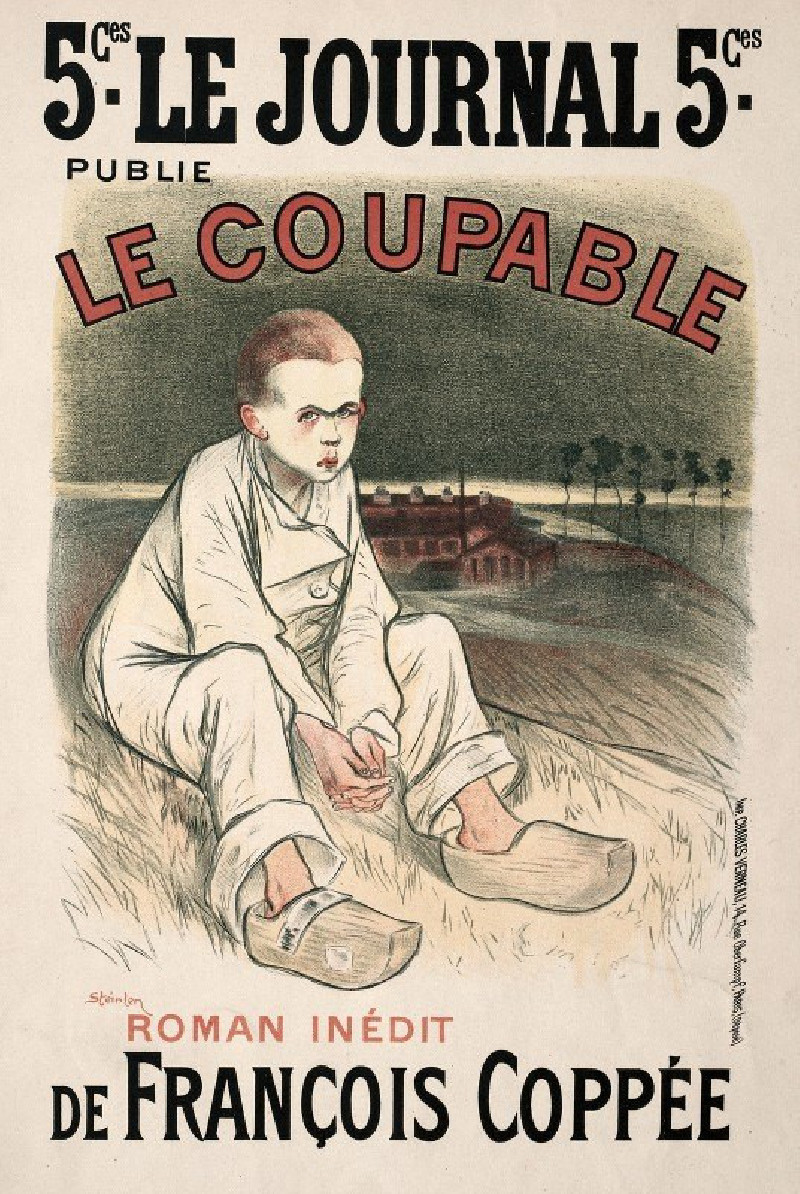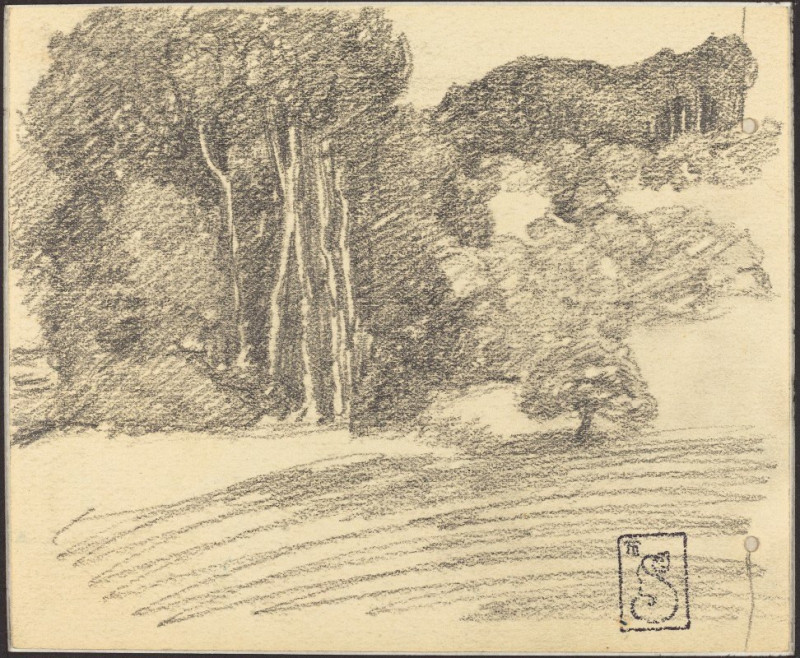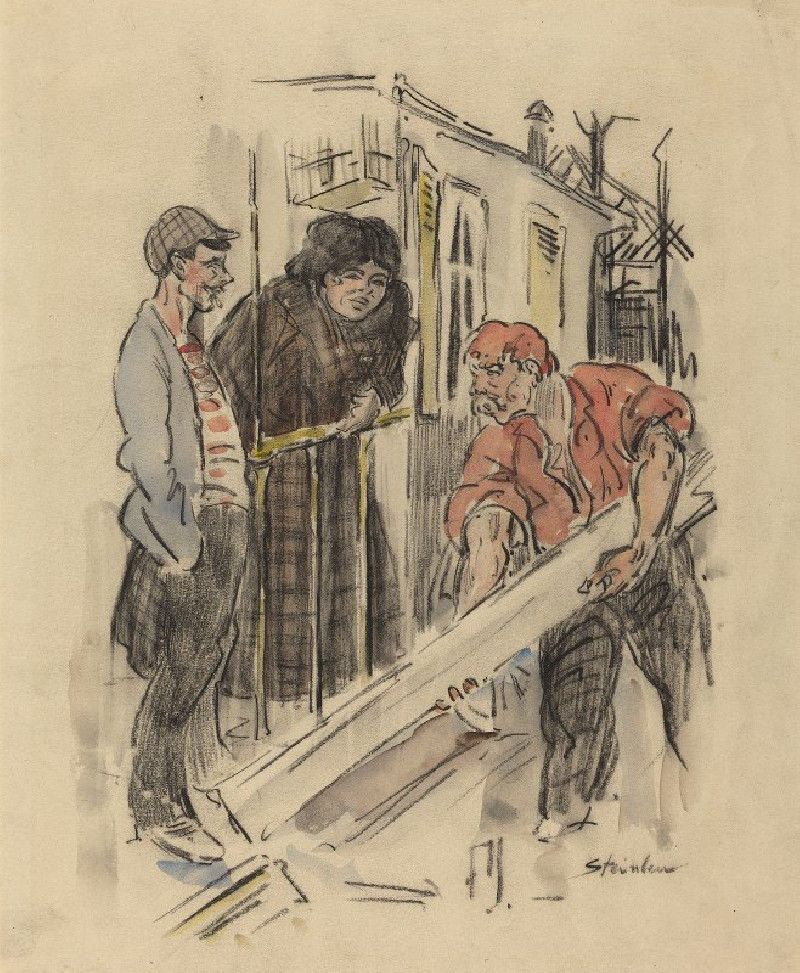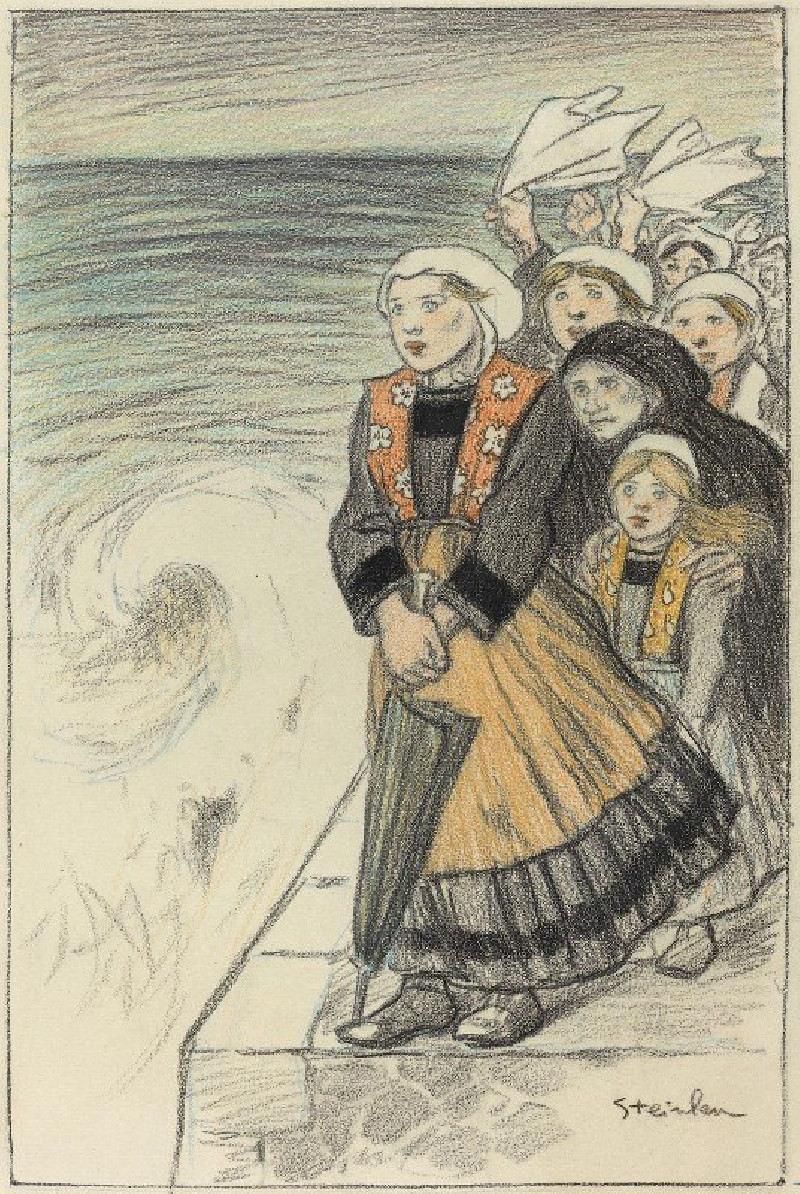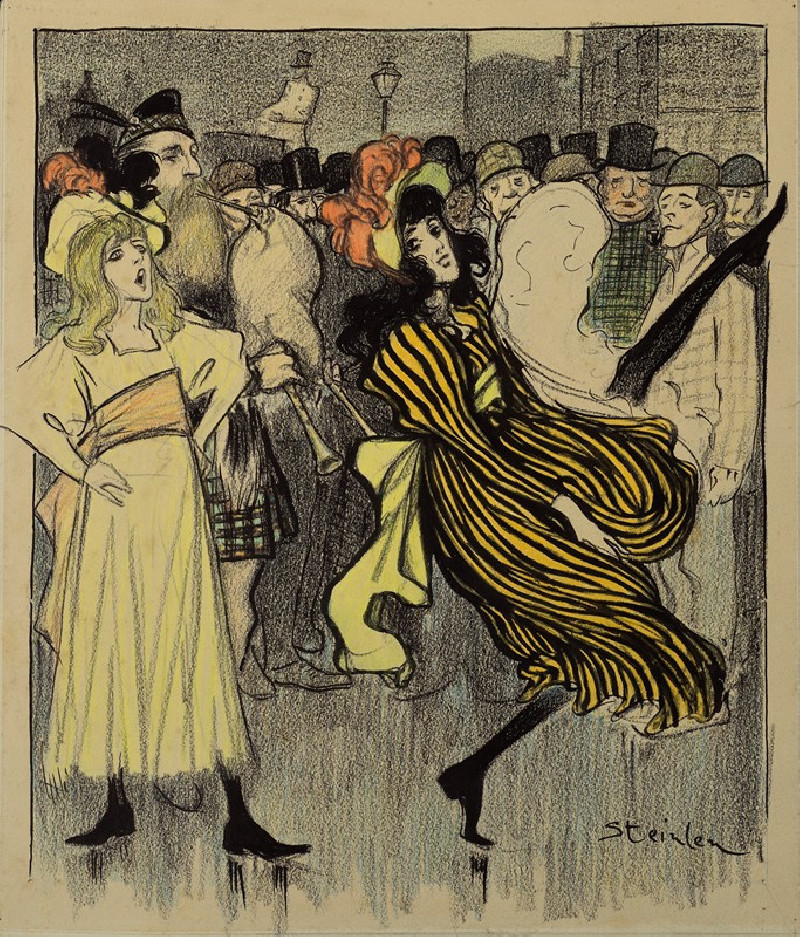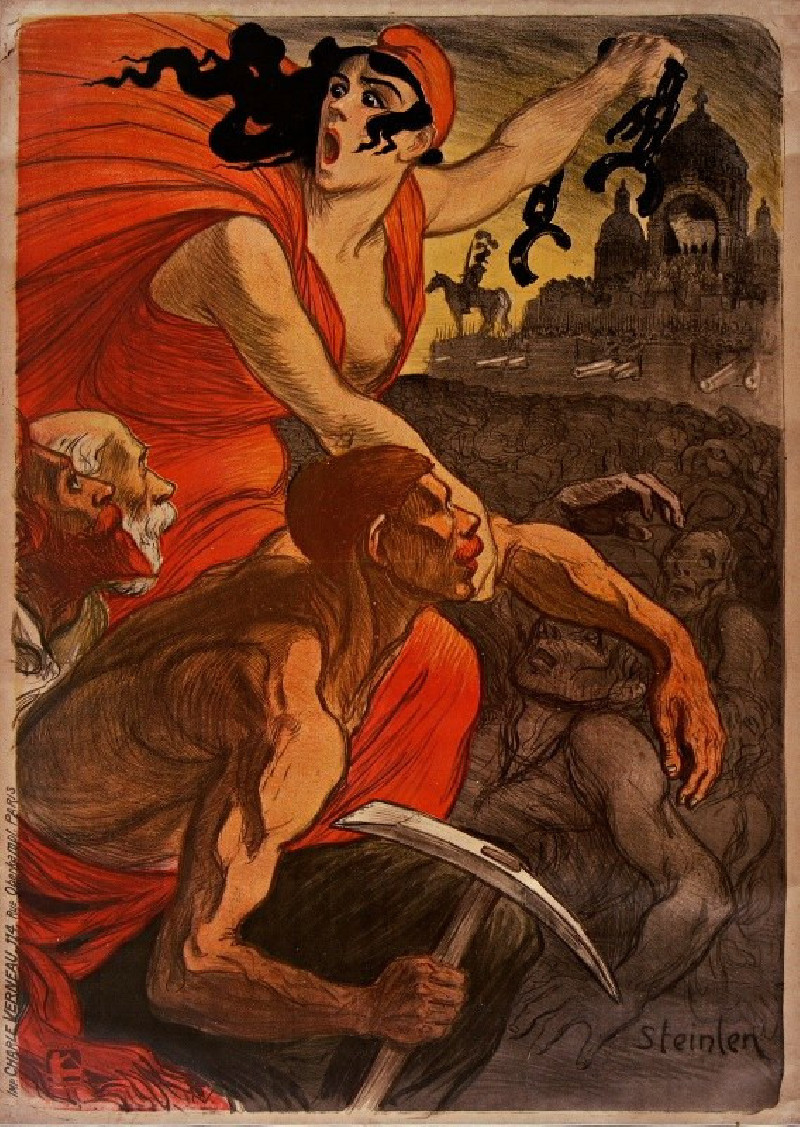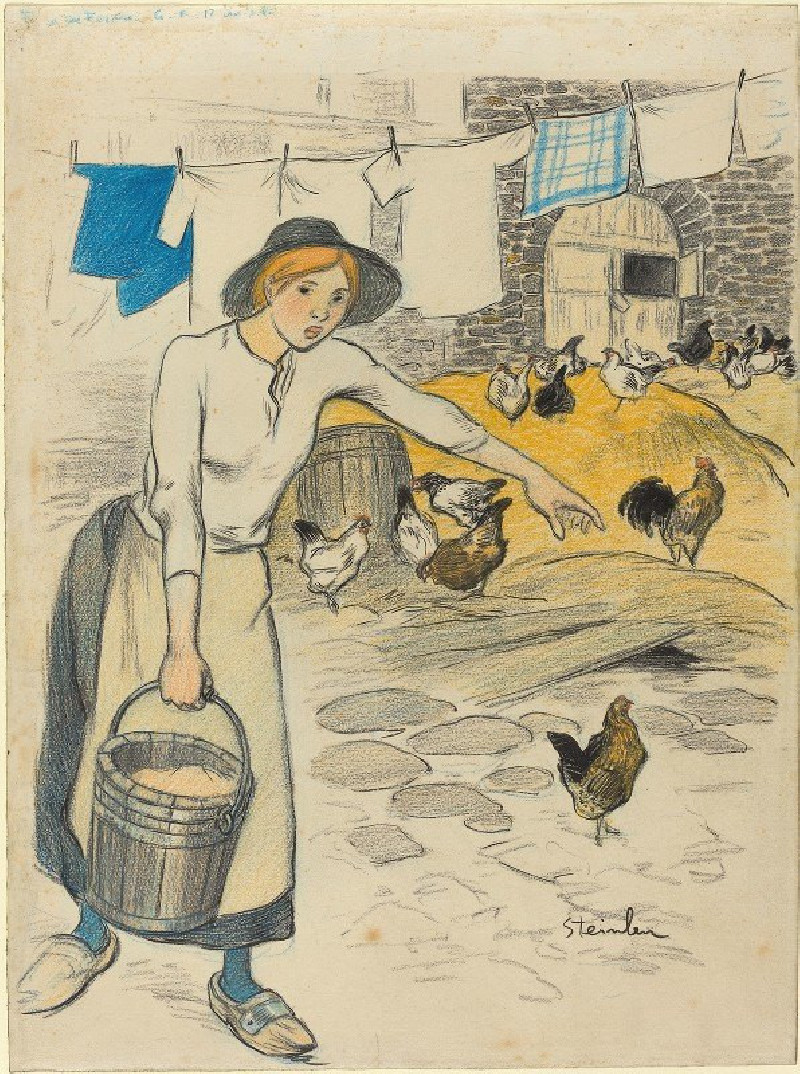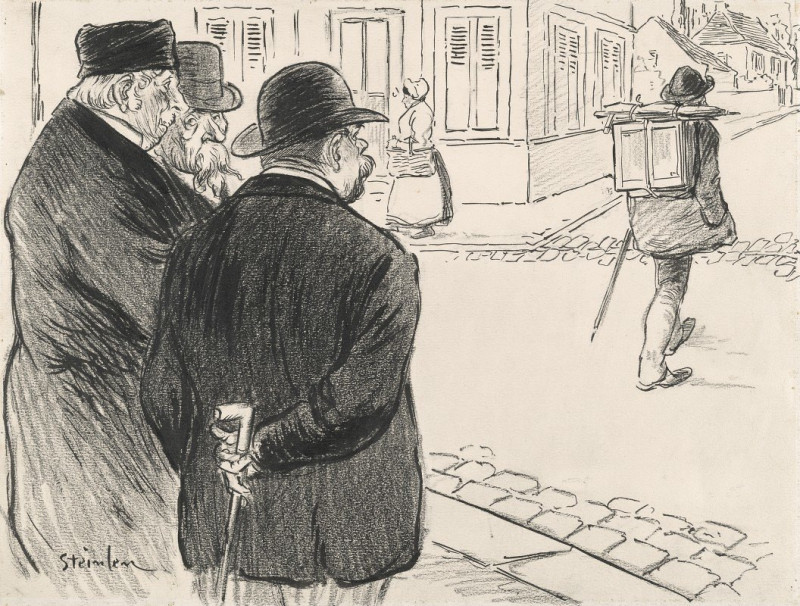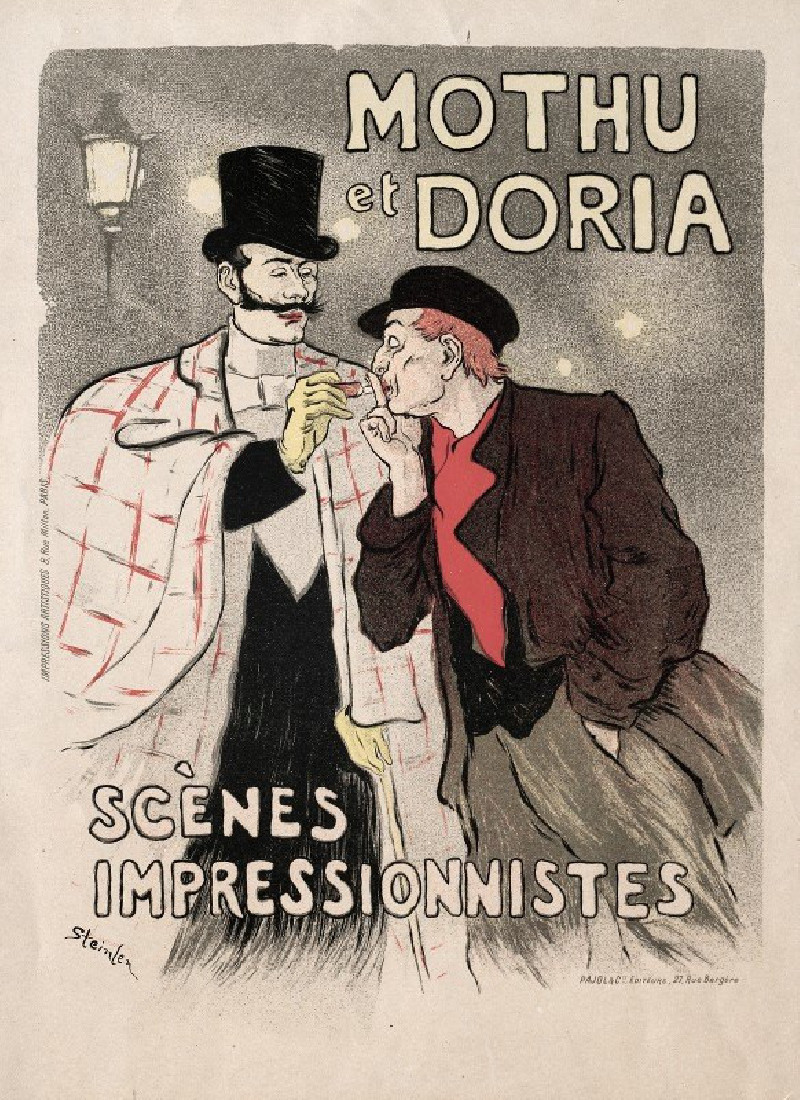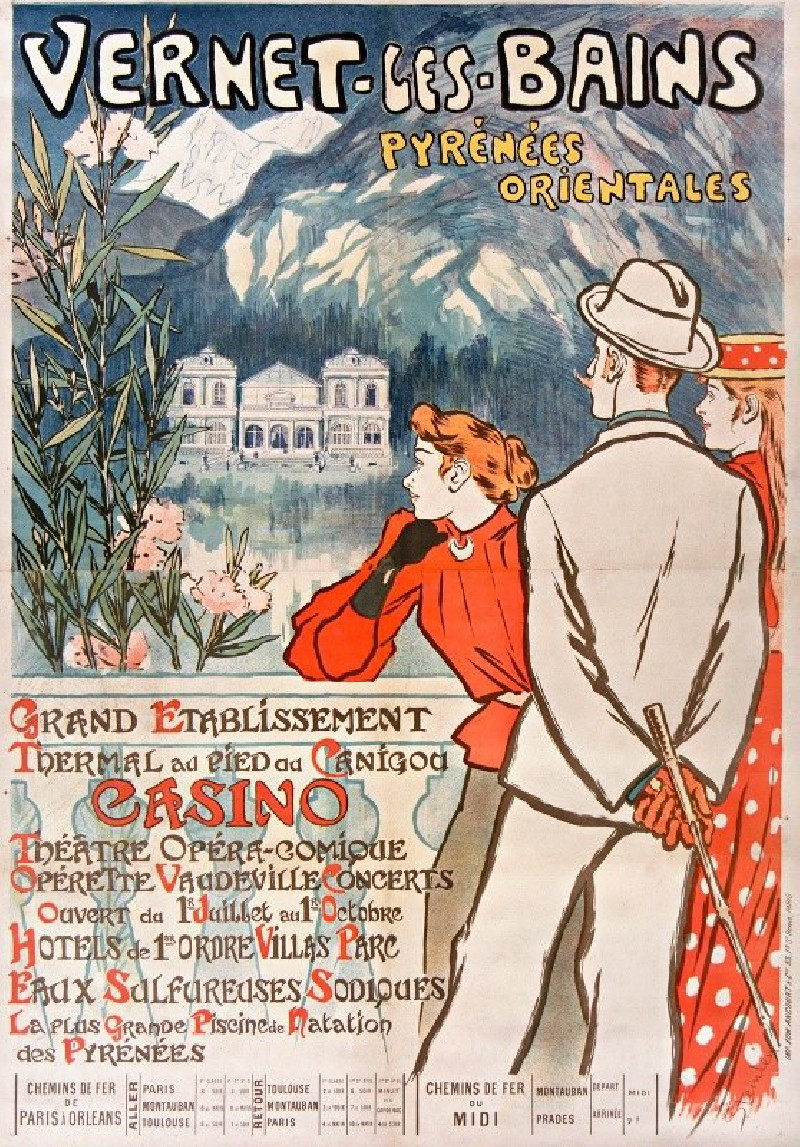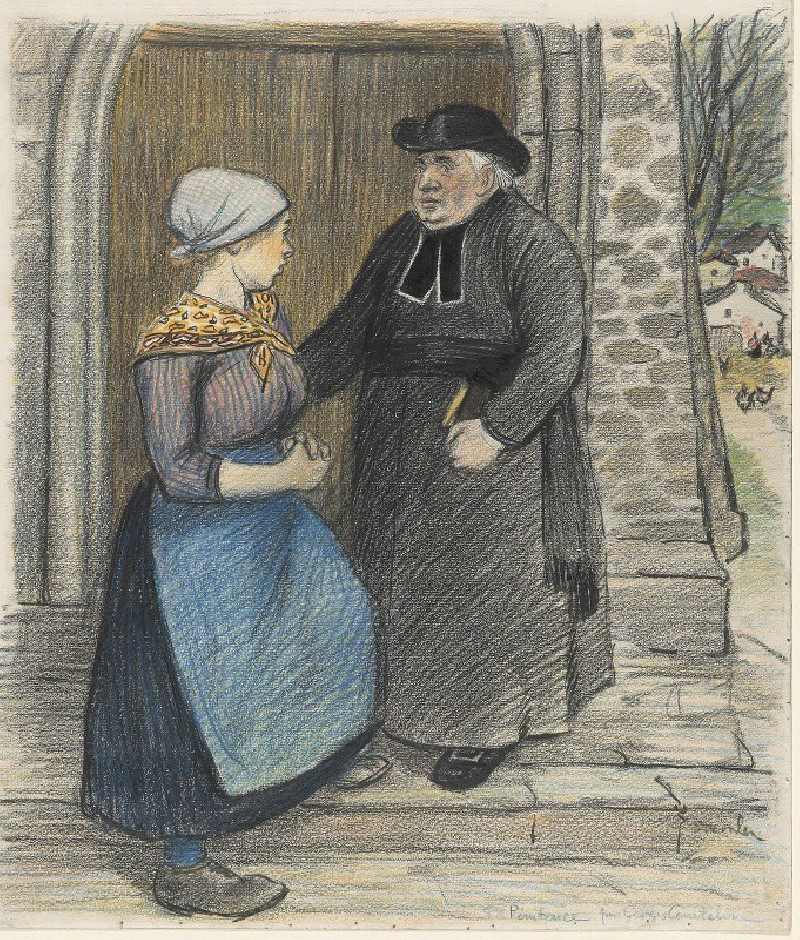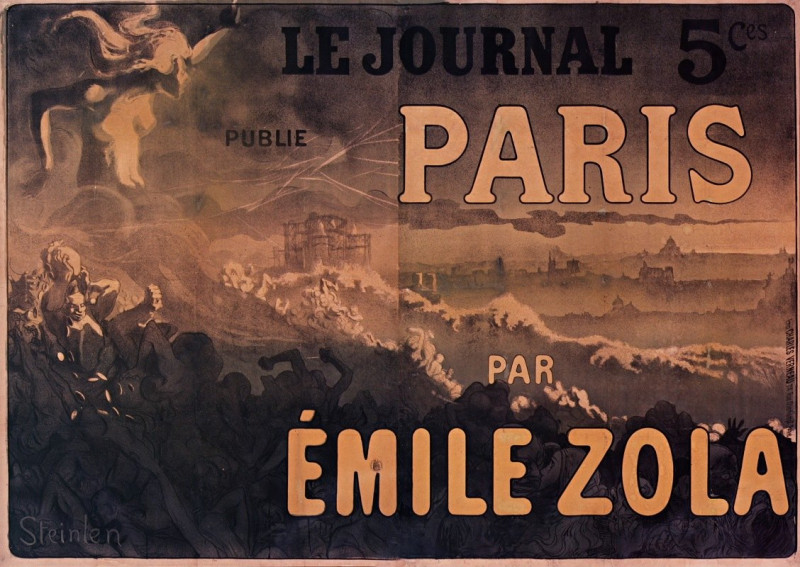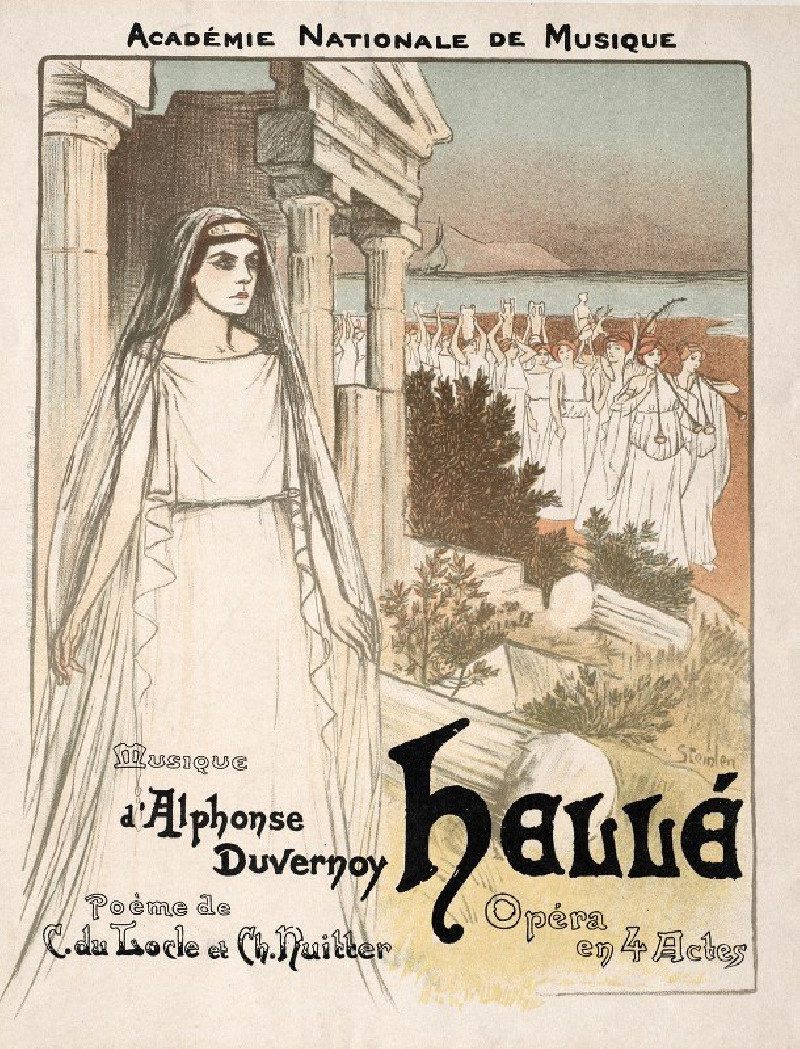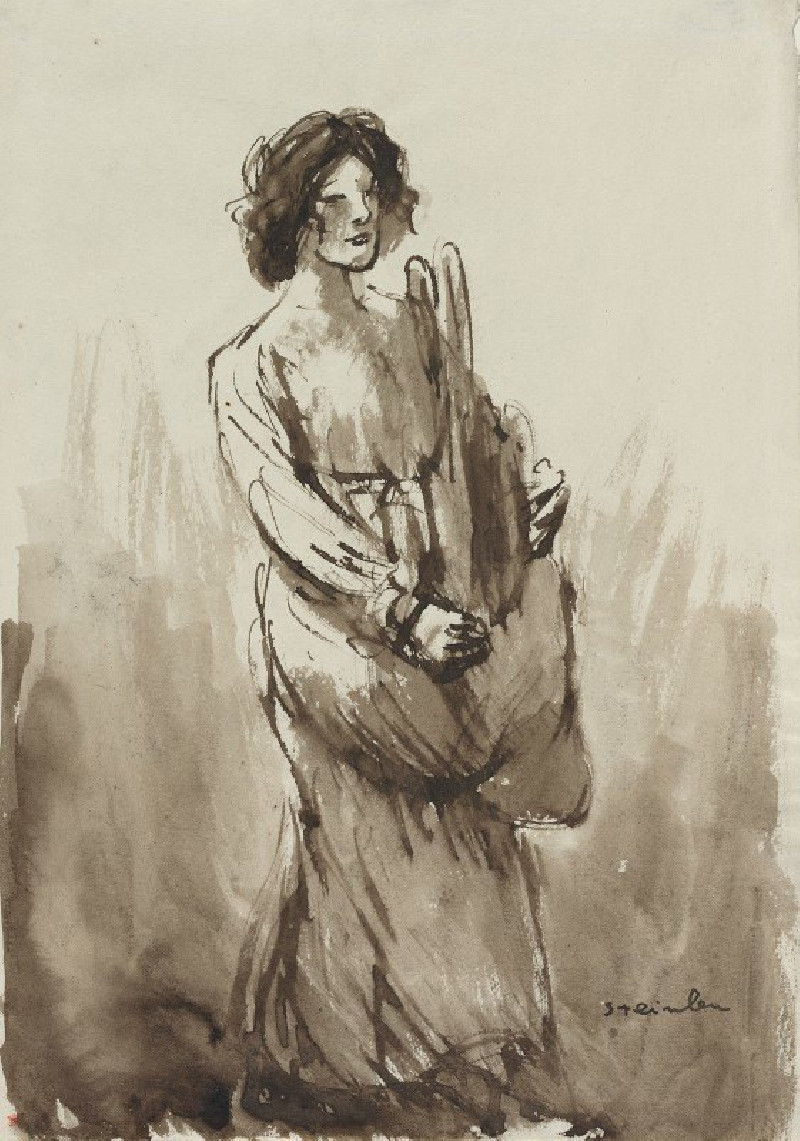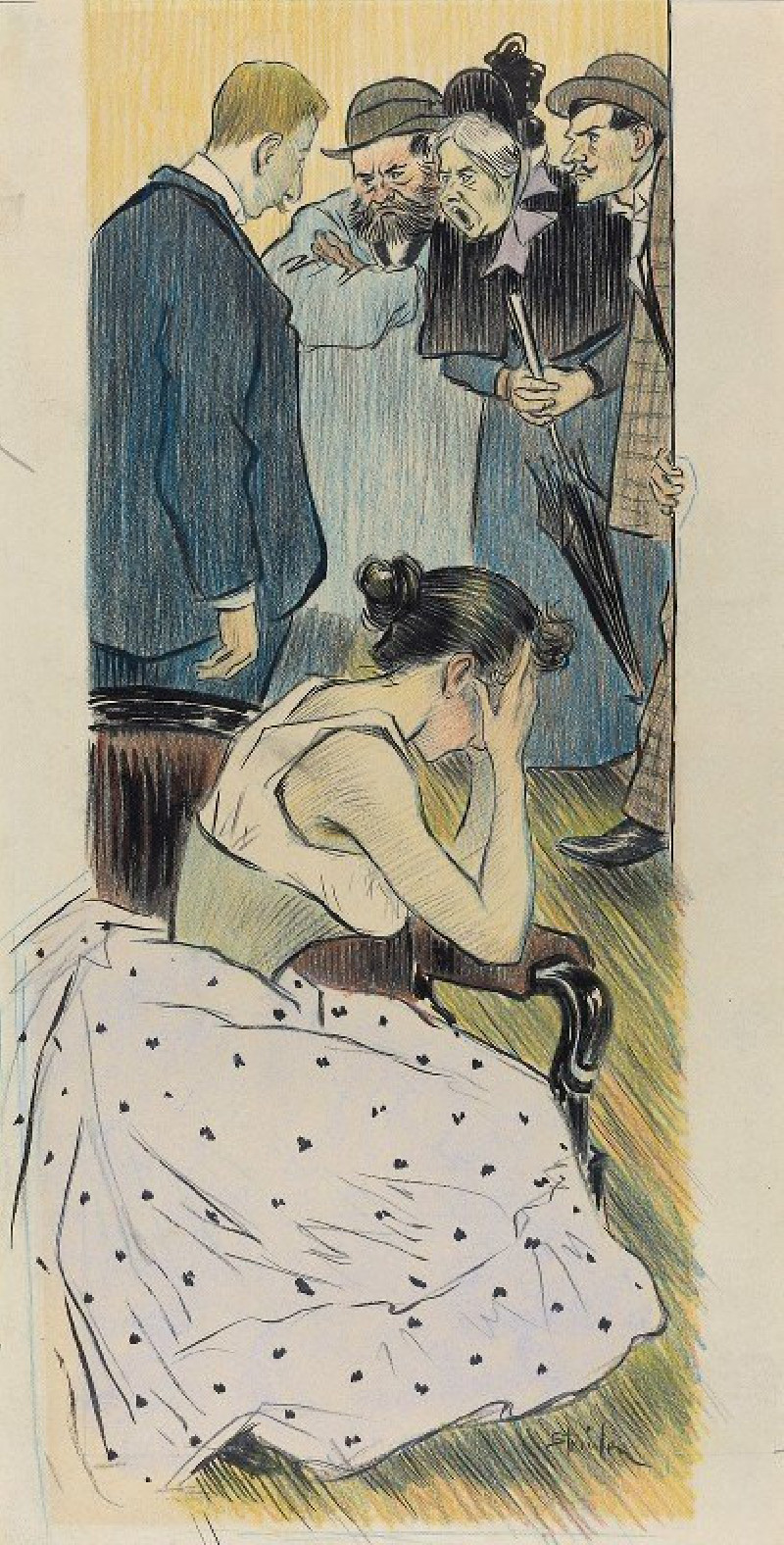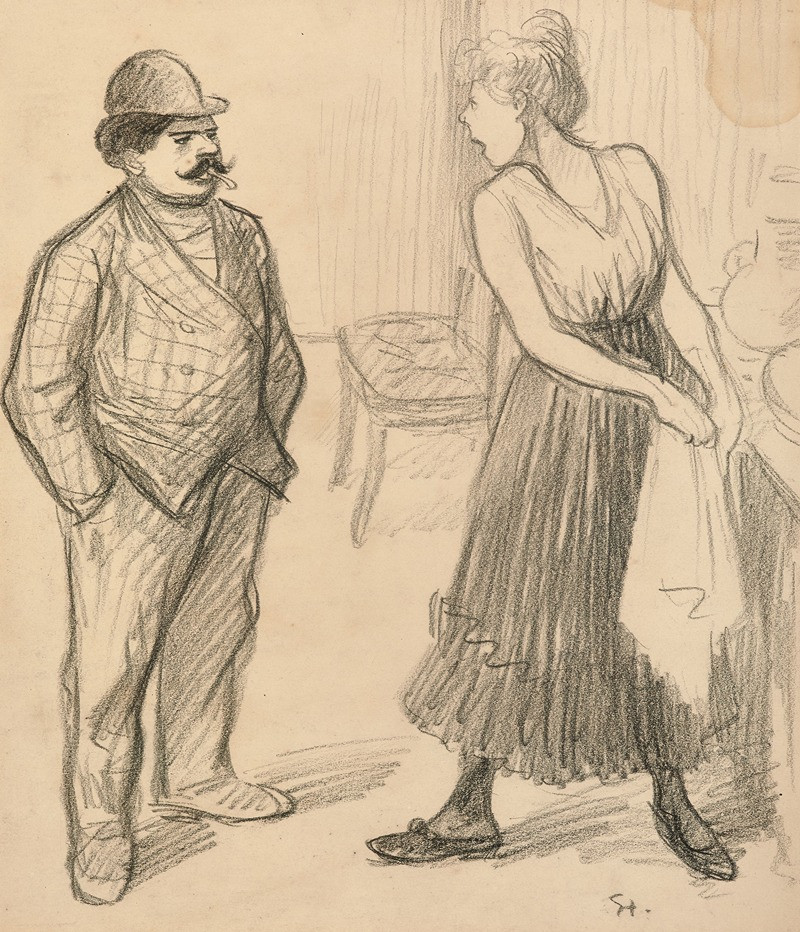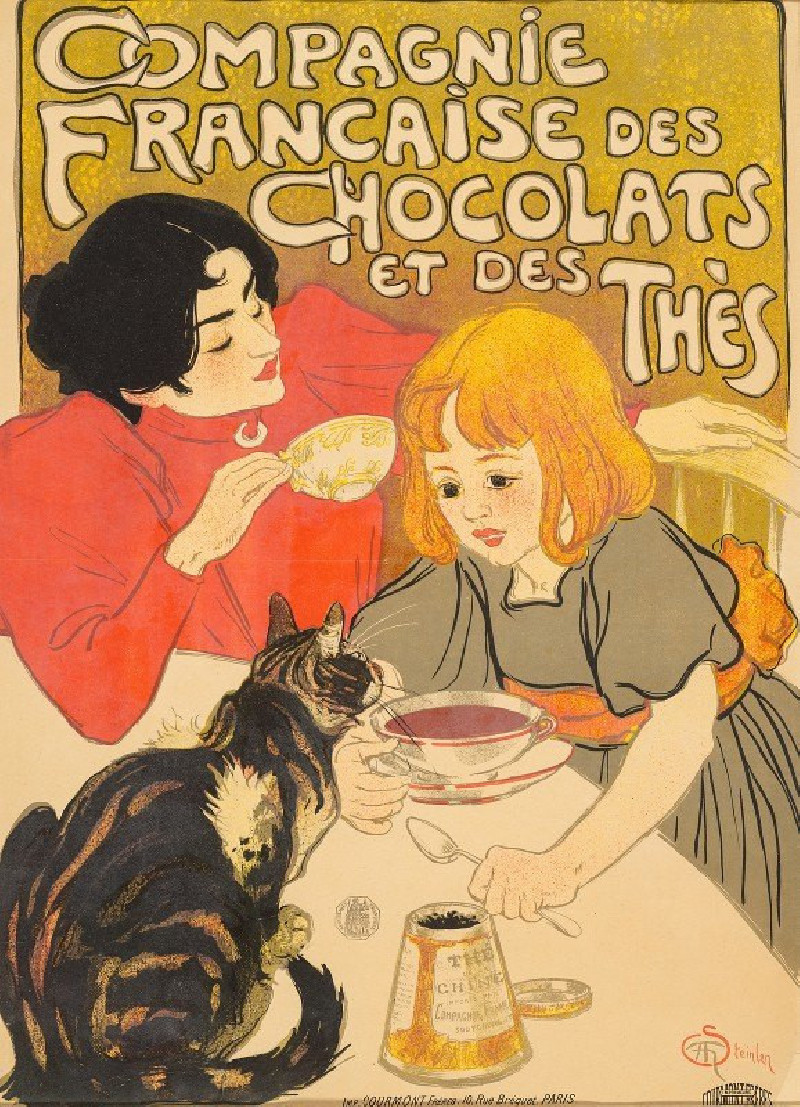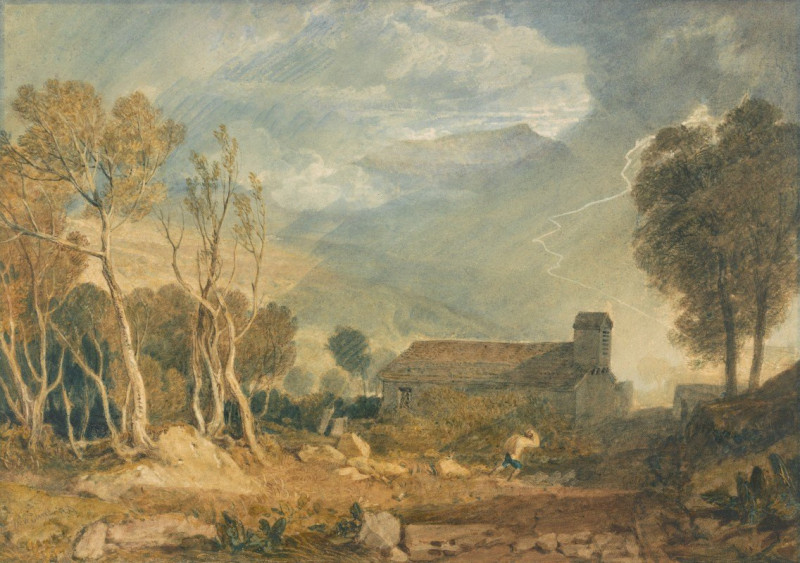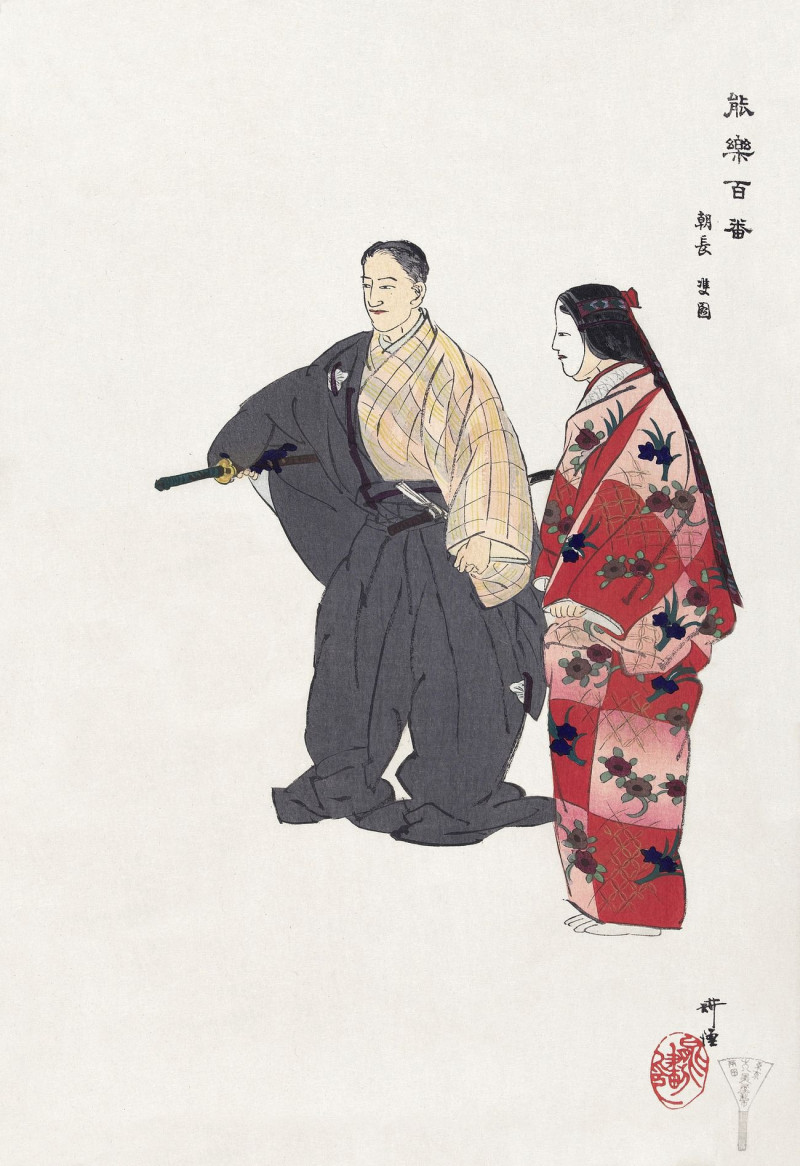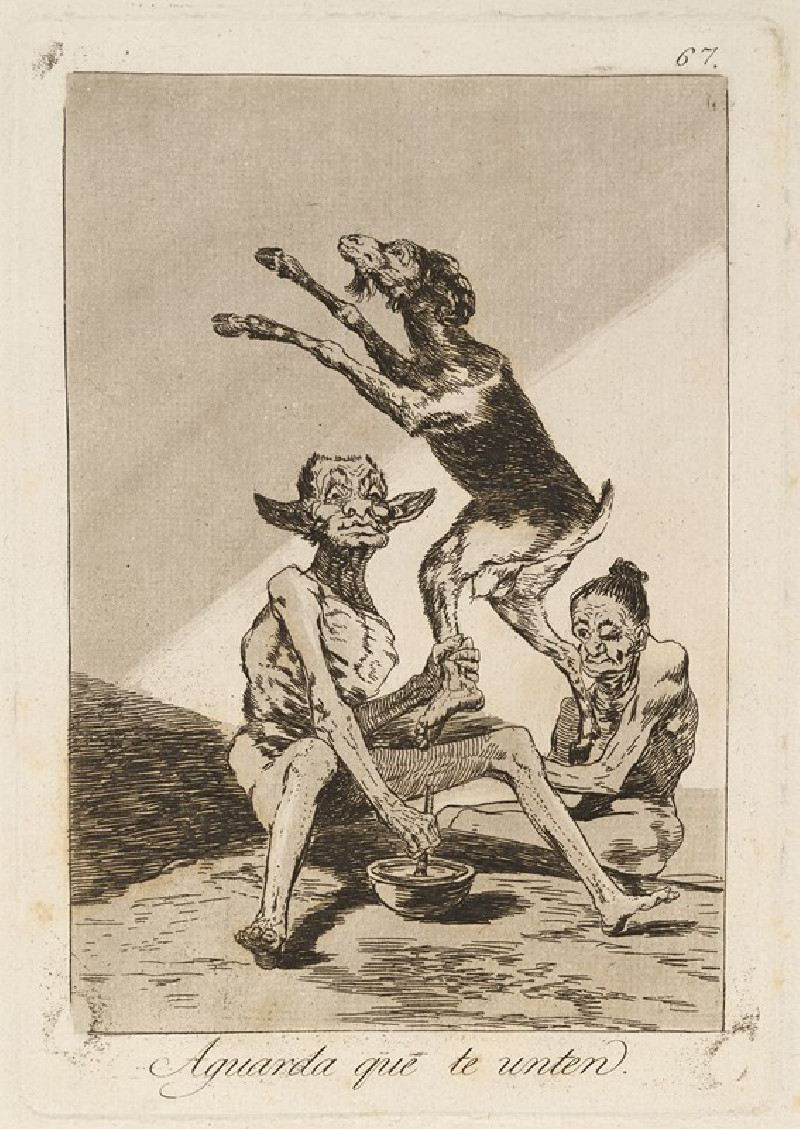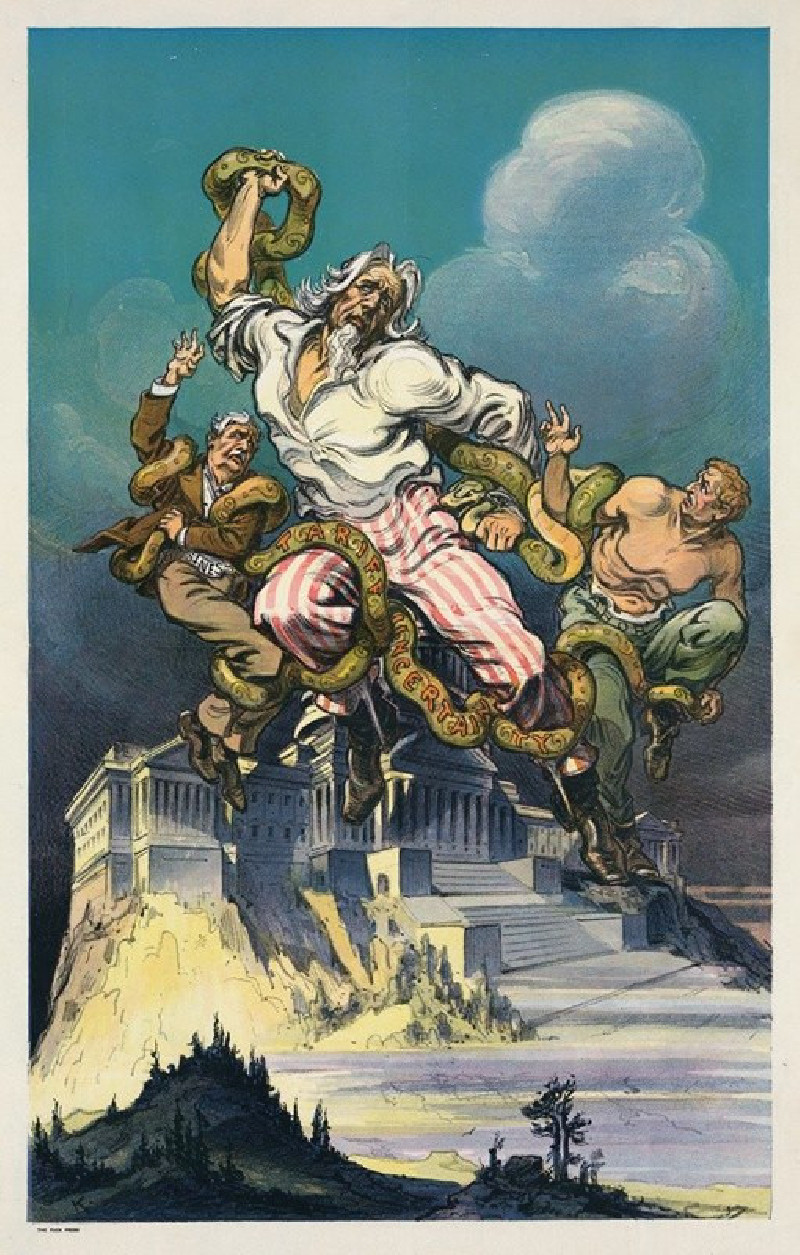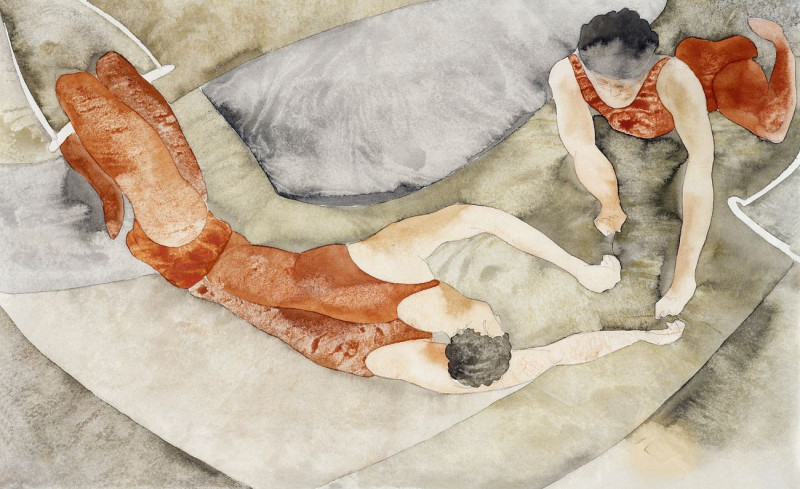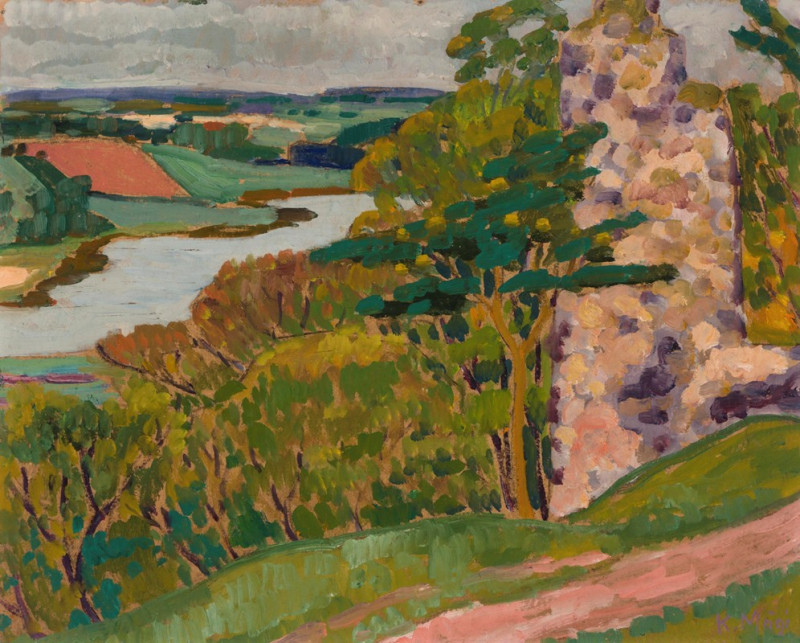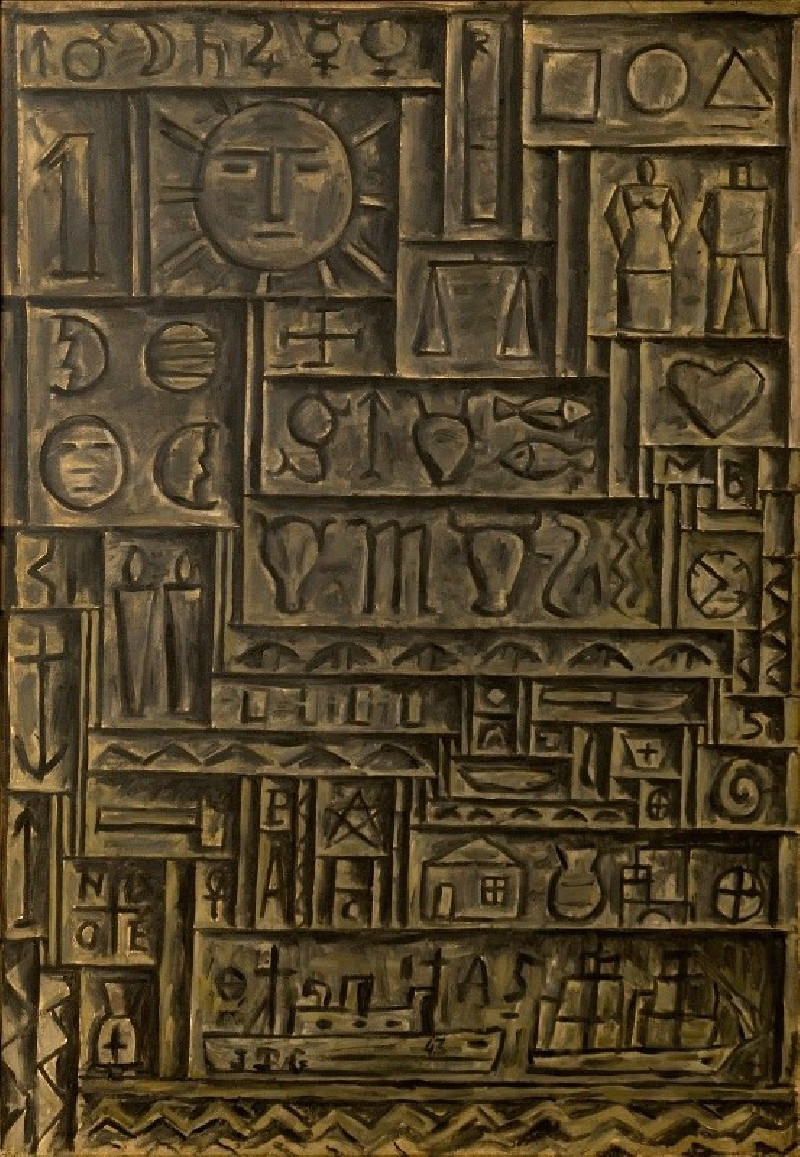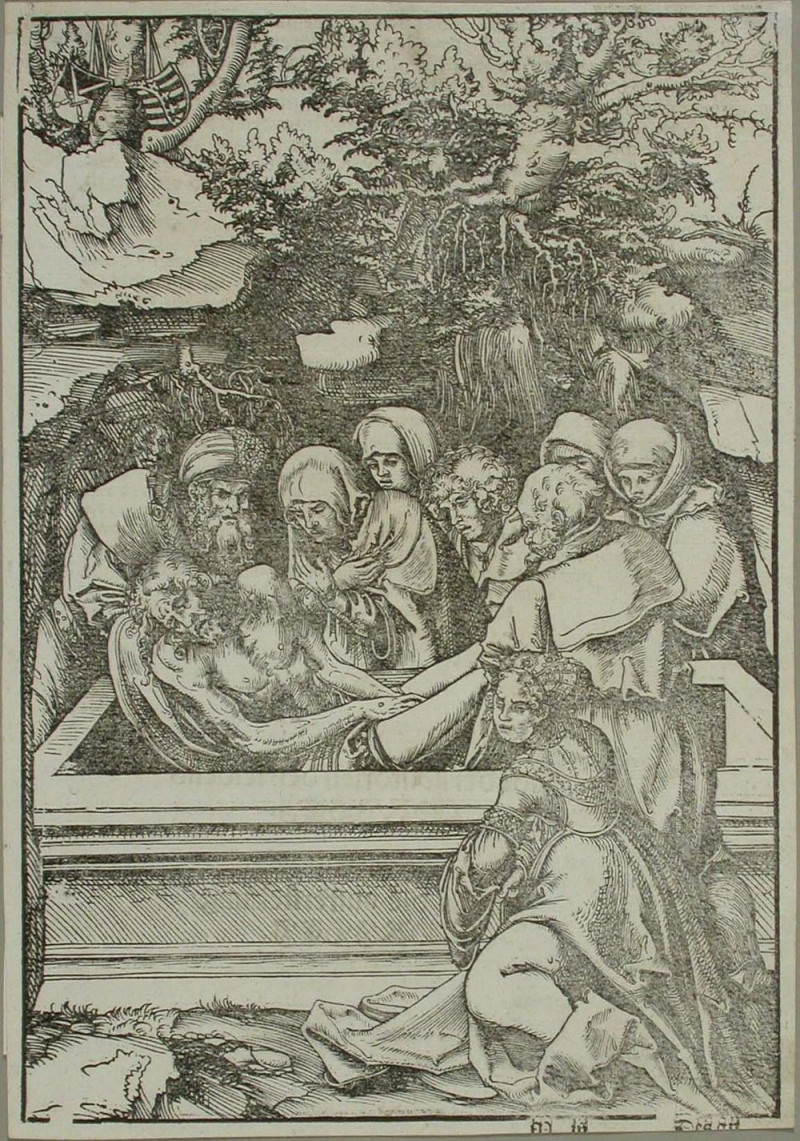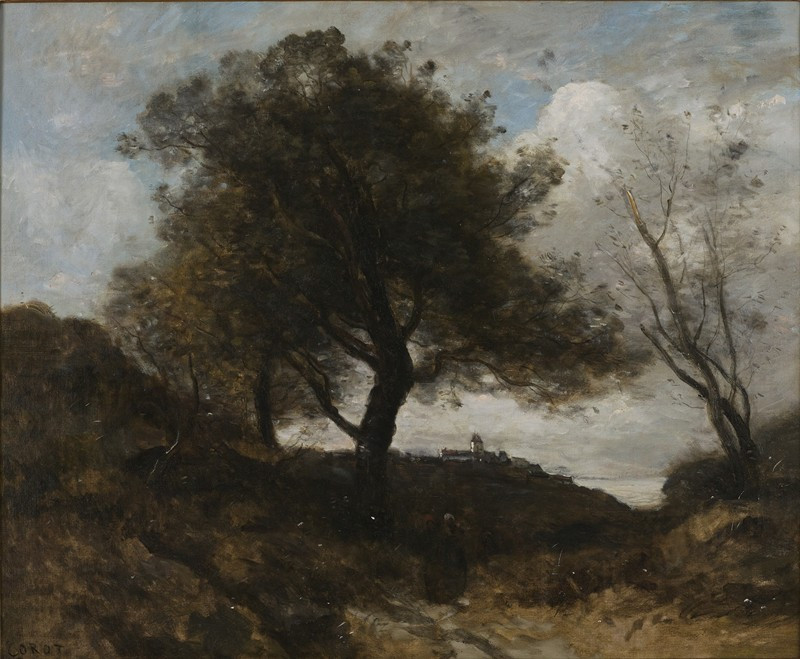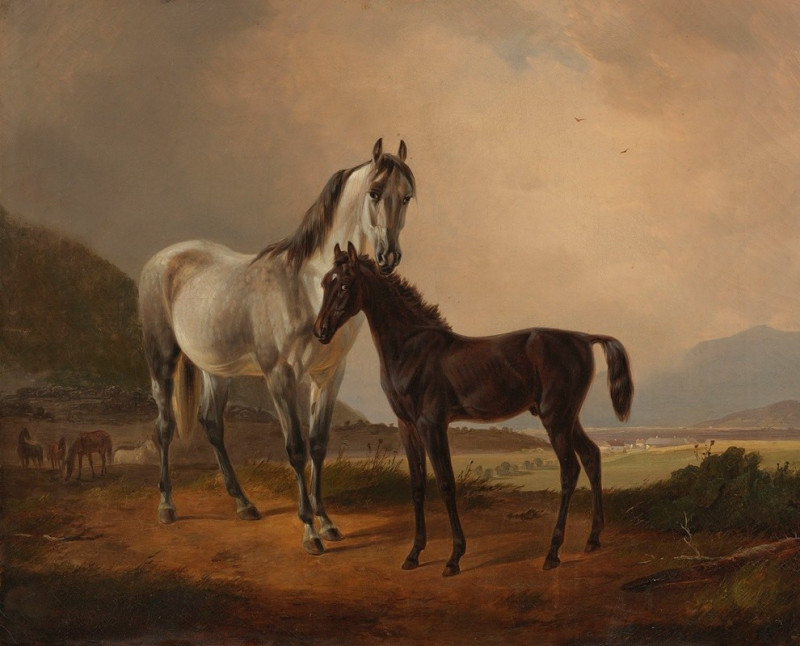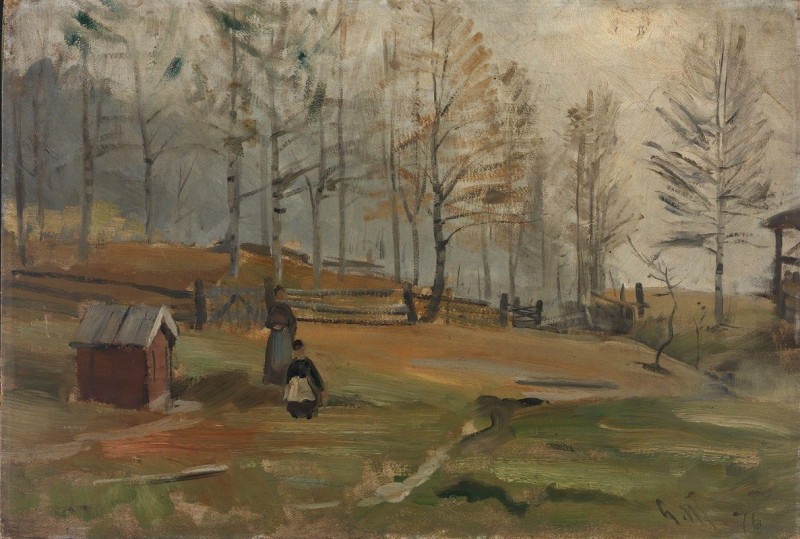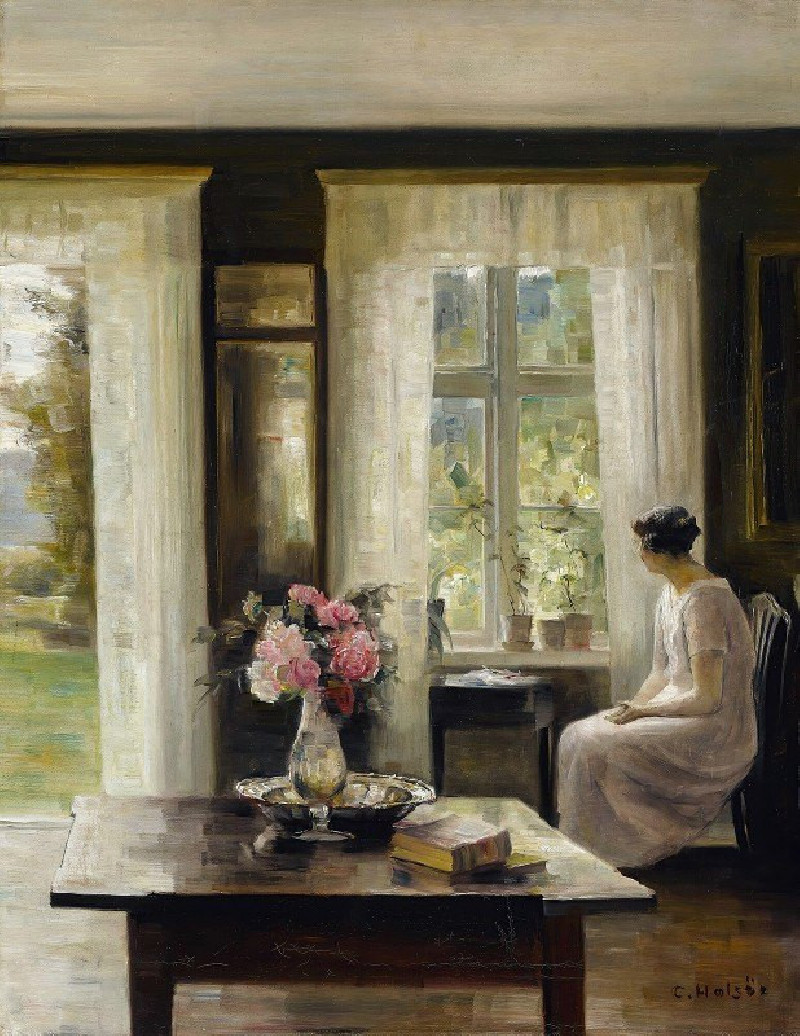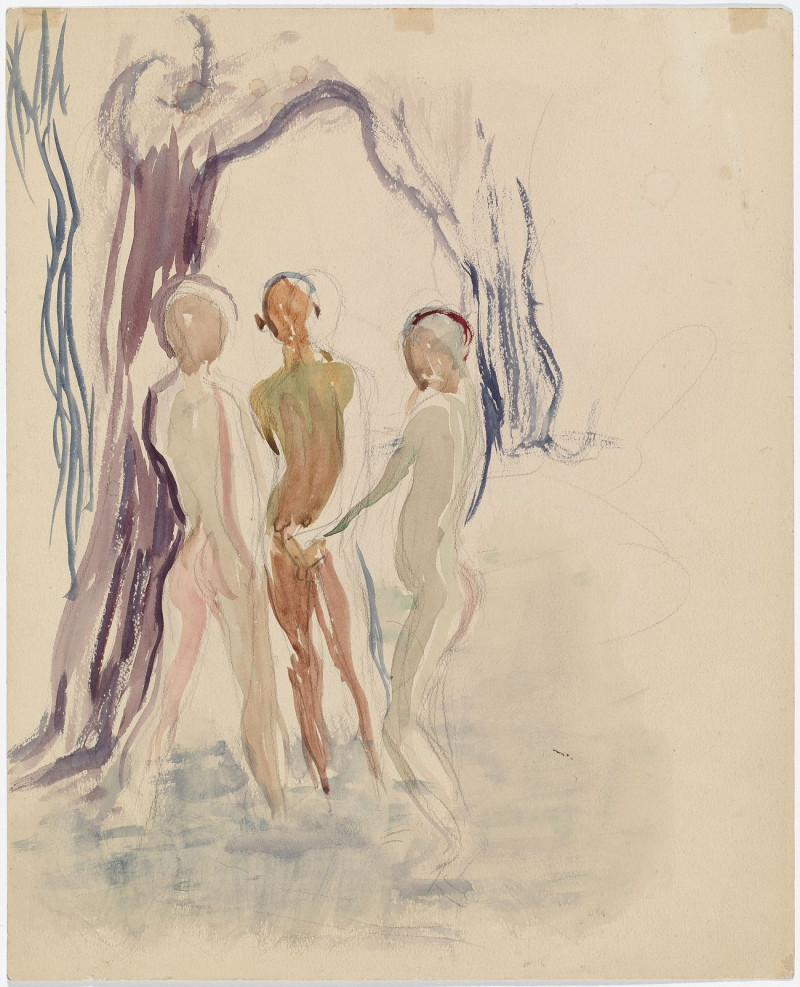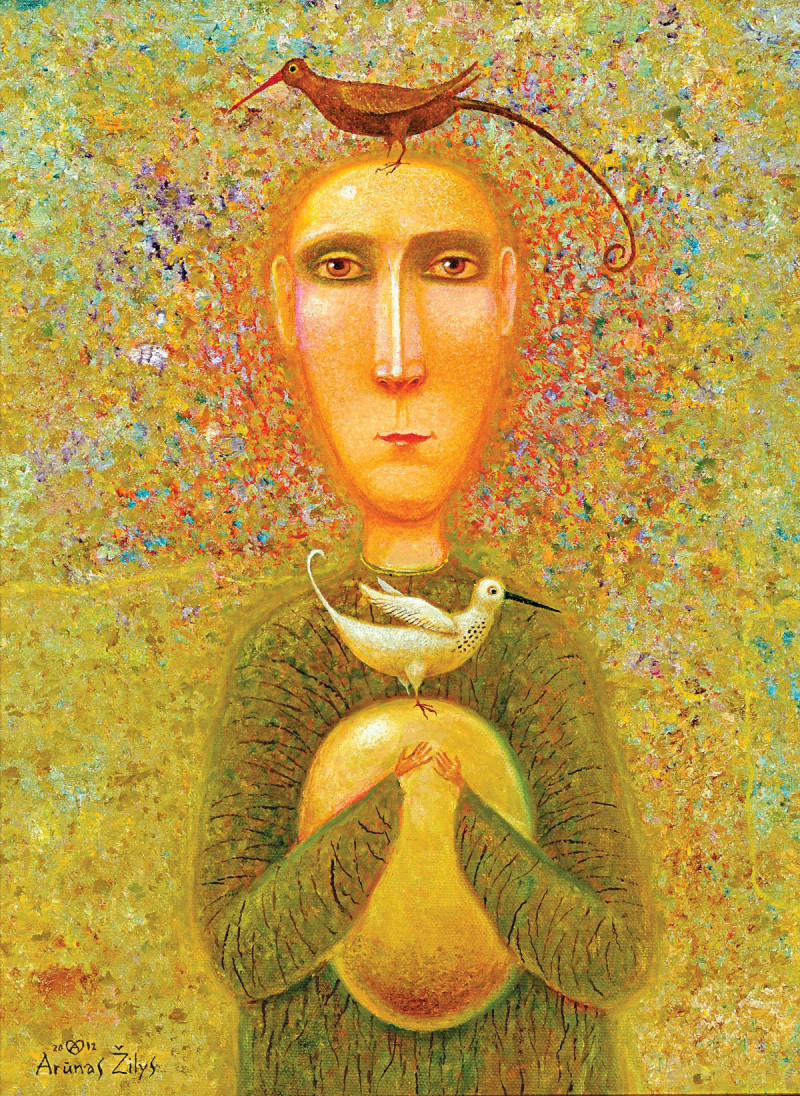Bal de Barrière (1898)
Technique: Giclée quality print
Recommended by our customers
More about this artwork
Théophile Alexandre Steinlen's captivating 1898 pastel artwork, "Bal de Barrière," captivates viewers with its dynamic portrayal of Parisian social life at the close of the 19th century. The painting presents a lively dance hall scene, brimming with the energy and diversity of the lower classes who frequented the barrières (city outskirts) of Paris.The artwork is infused with a whirl of motion and emotion. The composition pivots around two dancers in the middle, the woman in a dark, flowing dress and the man in black, their arms extended as they enjoy their dance. They are surrounded by a vivid crowd of onlookers and other dancers—each figure rendered with individual characteristics yet contributing to the overall sense of community and casual revelry.Steinlen's use of light and shadow plays dramatically across the scene, with the glow of the overhead gas lamps casting a warm, inviting ambiance over the dancers. The nuanced strokes and earthy tones capture the smoky interior, emphasizing the gritty, vibrant essence of Paris’s nightlife at that time.
Delivery
Returns
Théophile Alexandre Steinlen, was a Swiss-born French Art Nouveau painter and printmaker.
Born in Lausanne, Steinlen studied at the University of Lausanne before taking a job as a designer trainee at a textile mill in Mulhouse in eastern France. In his early twenties he was still developing his skills as a painter when he and his wife Emilie were encouraged by the painter François Bocion to move to the artistic community in the Montmartre Quarter of Paris. Once there, Steinlen was befriended by the painter Adolphe Willette who introduced him to the artistic crowd at Le Chat Noir that led to his commissions to do poster art for the cabaret owner/entertainer, Aristide Bruant and other commercial enterprises.

